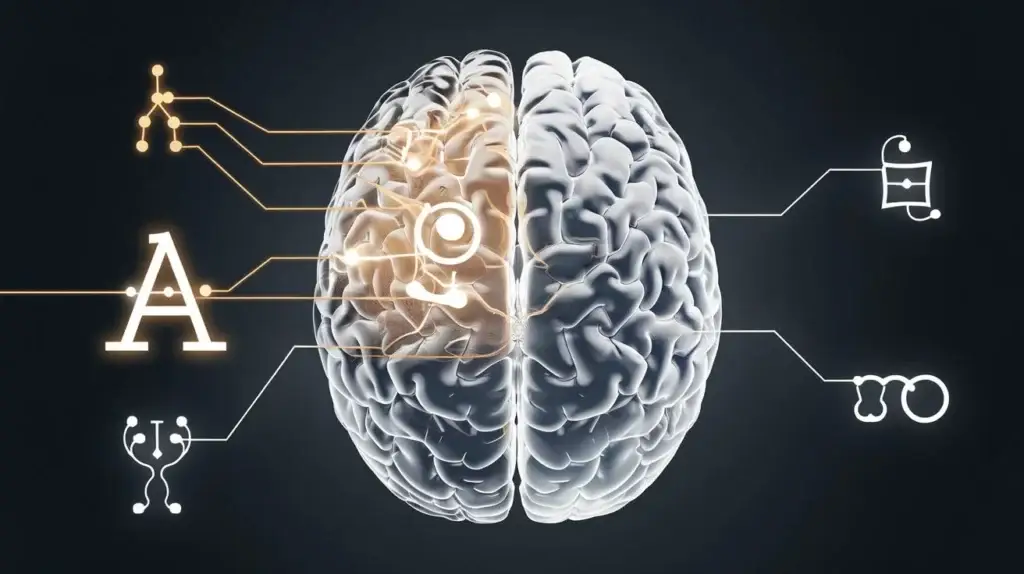Understanding Dyslexia: Causes, Symptoms, and Solutions
Table of Contents
Understanding Dyslexia: Causes, Symptoms, and Solutions
Dyslexia is a common learning disability affecting approximately 10-15% of the population in the United States . This condition primarily impacts reading and language processing, making it difficult for individuals to decode written words and make connections between letters and sounds. Despite dyslexia’s prevalence, there is often confusion about what it entails, how it affects individuals, and how best to support those living with the condition.
In this article, we will explore the causes of Difficulty reading, its symptoms across different age groups, the challenges it presents in education, and various interventions that can help individuals succeed academically and professionally. This analysis will be supported by documented research and current scientific understanding of the disorder.

What is Dyslexia?
Dyslexia is classified as a neurological condition that affects the brain’s language-processing capabilities. It specifically impairs a person’s ability to read fluently, recognize words accurately, and spell words correctly. According to the National Institute of Neurological Disorders and Stroke (NINDS), Difficulty reading occurs due to differences in brain structure, particularly in regions responsible for processing language .
It is important to clarify that Difficulty reading is not related to a person’s intelligence. Many dyslexic individuals possess average or above-average IQs but experience difficulties with specific linguistic tasks, particularly reading. Dyslexia also does not result from poor vision or lack of educational opportunity, as some might assume .

Causes of Difficulty reading
Research into the causes of Difficulty reading has identified both genetic and neurological factors as the primary contributors to this learning disorder. Several key findings help us understand why Difficulty reading occurs.
- Genetic Basis: Difficulty reading has a hereditary component. Studies have shown that children with a family history of dyslexia or other reading disorders are at greater risk of developing the condition themselves . Specific genes associated with language processing and reading ability have been linked to Difficulty reading, though environmental factors can also influence the severity of symptoms .
- Neurological Differences: Brain imaging studies have consistently shown that Difficulty reading results from differences in how the brain processes phonological information (the sounds of language). Specifically, the left hemisphere regions involved in reading and language comprehension, such as the Broca’s area and Wernicke’s area, are often less active in individuals with Difficulty reading . These brain differences make it challenging for individuals to break down words into their phonetic components and link them to written symbols.
- Environmental Influences: While Difficulty reading is largely genetic, certain environmental factors can exacerbate learning difficulties. For example, early childhood exposure to language-rich environments, reading habits, and schooling quality can influence how quickly a child develops reading skills. Children who grow up in environments with limited exposure to books or conversations may experience additional struggles with Difficulty reading .

Symptoms and Signs of Difficulty reading
Difficulty reading manifests differently depending on age and individual experience. The following breakdown highlights the most common symptoms across age groups:
- Early Childhood: Difficulty reading often first appears during the preschool years. Children may struggle to recognize letters, remember the alphabet, or pronounce simple words. They may also show delays in learning to speak or difficulty with rhyming .
- Elementary School: This is the most common period when Difficulty reading becomes noticeable, as reading becomes central to the educational experience. Children with dyslexia may have trouble sounding out words, reading aloud, and spelling consistently. These struggles can cause frustration, leading to anxiety or a reluctance to participate in reading activities .
- Adolescence and Adulthood: As individuals grow older, the symptoms of dyslexia may shift from basic reading struggles to more complex issues, such as difficulty comprehending texts, taking notes, or organizing written assignments. Some dyslexic adults may also have trouble with time management and sequential tasks, such as following instructions or organizing their work .
Challenges in Education
For students with dyslexia, the traditional classroom can present several challenges. Reading-based tasks, such as taking tests, completing assignments, or engaging in class discussions, often require significantly more effort. Without proper accommodations, dyslexic students are at risk of falling behind their peers academically.
One of the most significant challenges dyslexic students face is processing speed. Dyslexia often slows down the pace at which individuals can decode words and sentences, which can lead to difficulty completing timed tasks. In addition, many students with dyslexia have trouble with spelling and writing fluency, which can further complicate written assignments .
Diagnosing Dyslexia
Diagnosing Difficulty reading typically involves a comprehensive evaluation process, including input from educators, psychologists, and specialists in language and literacy development. According to the American Academy of Pediatrics (AAP), children suspected of having dyslexia undergo tests designed to assess their reading level, phonological awareness, and cognitive abilities . These evaluations help differentiate dyslexia from other learning disabilities or developmental delays.
Interventions and Strategies for Difficulty reading
While dyslexia presents challenges, early intervention and the right teaching strategies can make a profound difference. Educational interventions are most effective when tailored to the individual’s specific needs and learning style. Below are some evidence-based interventions that have proven successful:
- Structured Literacy Programs: Programs like Orton-Gillingham and the Wilson Reading System use structured, sequential approaches to teach reading through phonics. These programs focus on teaching students how to break words down into phonemes, blend sounds, and build reading fluency .
- Multisensory Learning: Research shows that using multiple senses (sight, touch, and sound) helps reinforce learning in dyslexic individuals. Teachers may use techniques such as tracing letters in sand while sounding them out or using visual aids alongside auditory instructions to solidify concepts .
- Assistive Technology: Technology plays an increasingly important role in supporting dyslexic learners. Text-to-speech software allows students to listen to written material, while speech-to-text tools help with writing assignments. Tools like audiobooks and specialized reading apps provide alternative ways for dyslexic students to engage with material .
Emotional and Social Considerations
Beyond academic challenges, Difficulty reading can impact a child’s emotional well-being. Children who struggle to keep up with their peers may experience frustration, embarrassment, or anxiety. Building a supportive, encouraging environment is crucial to helping students maintain a positive self-image.
Parents and teachers should emphasize a child’s strengths, recognizing that dyslexia often comes with unique talents such as creative thinking, problem-solving, and artistic abilities. Helping children focus on their gifts can boost their confidence and reduce the negative emotional impact of dyslexia .
Success Stories and Long-Term Outlook
Many famous individuals have been open about their experiences with dyslexia, including successful entrepreneurs like Richard Branson, filmmakers like Steven Spielberg, and actors like Whoopi Goldberg . Their stories highlight the fact that while dyslexia presents challenges, it is not a barrier to success. With the right support and perseverance, individuals with dyslexia can thrive in a wide range of professions.
Conclusion
Dyslexia is a complex but manageable learning disorder. With advances in educational methods and assistive technology, dyslexic individuals have more tools than ever to help them succeed academically and professionally. Early diagnosis and tailored interventions are key to ensuring that children with dyslexia reach their full potential.
By fostering a supportive and understanding environment, both at home and in the classroom, we can help dyslexic students build confidence, develop resilience, and unlock their unique talents.
References
- Shaywitz, S. (2003). Overcoming Dyslexia. New York: Alfred A. Knopf.
- National Institute of Neurological Disorders and Stroke (NINDS). “Dyslexia Information Page.” https://www.ninds.nih.gov
- Snowling, M. J., & Hulme, C. (2012). The nature and classification of reading disorders. In Dyslexia: A Practical Guide for Teachers.
- Galaburda, A. M. (2005). Dyslexia and the brain. Scientific American.
- Pennington, B. F. (2009). Diagnosing learning disorders: A neuropsychological framework. The Guilford Press.
- Lyon, G. R., Shaywitz, S. E., & Shaywitz, B. A. (2003). Defining dyslexia, comorbidity, teachers’ knowledge of language and reading. Annals of Dyslexia.
- Shaywitz, B. A., et al. (2002). Disruption of posterior brain systems for reading in children with developmental dyslexia. Biological Psychiatry.
- Stanovich, K. E. (1986). Matthew effects in reading: Some consequences of individual differences in the acquisition of literacy. Reading Research Quarterly.
- American Academy of Pediatrics (AAP). “Learning Disabilities: What Parents Need to Know.” https://www.aap.org
- Wolf, M., & O’Brien, B. (2017). Reader, Come Home: The Reading Brain in a Digital World. Harper







